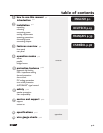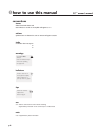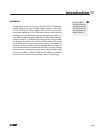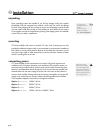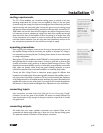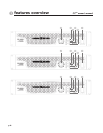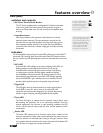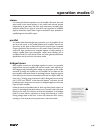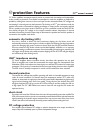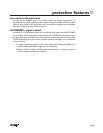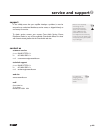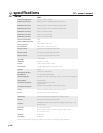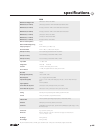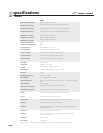
p. 9
stereo
For stereo (dual channel) operation, turn the amplifier off and set the mode
select switch to the stereo position. In this mode, both channels operate
independently of each other, with their input attenuators controlling their
respective levels. Thus, a signal at channel A’s input produces an amplified
signal at channel A’s output, while a signal at channel B’s input produces an
amplified signal at channel B’s output.
parallel
For parallel (dual-channel/single input) operation, turn the amplifier off and
set the mode switch in the parallel position; both amplifier channels are
then driven by the signal at channel A’s input. No jumper wires are needed.
Output connections are the same as in the stereo mode. Channel A’s and
channel B’s input connectors are strapped together to allow patching to
another amplifier. Both input attenuators remain active, allowing you to
set different levels for each channel. Power and other general performance
specifications are the same as in the stereo mode.
bridged mono
Both amplifier channels can be bridged together to make a very powerful
single-channel monaural amplifier. Use extreme caution when operating in
the bridged mode; potentially lethal voltage may be present at the output
terminals. To bridge the amplifier, turn the amplifier off and slide the rear
panel amplifier mode select switch to the bridge position. Apply the signal to
channel A’s input and connect the speakers across the hot outputs which are
either the “+” binding posts of channels A and B. Alternately connect across
pins “1+POS” and “2+NEG” of the channel A Speakon
®
connector. As with
parallel operation, both input connectors are strapped together to drive the
input of another amplifier.
Unlike the stereo and parallel modes, in which one side of each output is at
ground, in the bridged mode both sides are hot. Channel A’s side is the same
polarity as the input. The minimum nominal load impedance in the bridged
mode is 4 ohms which is equivalent to driving both channels at 2 ohms.
Driving bridged loads of less than 4 ohms will activate the ACL circuitry
resulting in a loss of power, and may also cause a thermal overload.
When operating in the
bridged mode, both
attenuators must be in
the same position so
the speaker load will be
equally shared between
the channels.
a
operation modes
4



